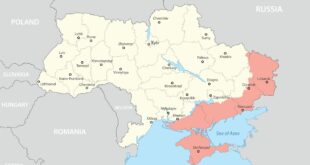Erica Pepe
On July 4, 2024, Britain witnessed early general elections called by Prime Minister Rishi Sunak on May 22, a move aimed at avoiding an internal party coup following his mediocre performance, which had eroded public confidence in Conservative rule. The Conservative era, stretching back to 2010, was marked by two significant referendums—the first leading to Scotland’s independence and the second to Brexit—alongside numerous crises, including the COVID-19 pandemic and the war in Ukraine. This period also saw a series of scandals, particularly during the tenures of former Prime Ministers Boris Johnson and Liz Truss, culminating in Sunak’s era, which was marred by the worst financial inflation crisis in decades. The election results aligned with expectations: the Labour Party achieved an overwhelming majority, securing 411 out of 650 seats, while the Conservatives faced the worst defeat in their history.
Results and Seat Distribution
Sunak’s decision to call for general elections surprised the public, political and economic circles, and even the Conservatives themselves. The lack of preparation time for a challenging election campaign, compounded by significant losses in the May 2 local elections, seemed to push Sunak towards this “forward escape.” The escalating conflicts within his party, which had seen four prime ministers in three years, likely influenced this decision.
The voter turnout was about 60%, the lowest since 2001 (59.4%). Labour won an overwhelming majority with 411 seats, a remarkable increase of 209 seats from the 2019 elections. The Conservatives, on the other hand, managed only 121 seats, losing 244 seats, marking one of their worst performances in over a century. Labour’s success was the best since Tony Blair’s 1997 victory, which saw the party win 417 seats. The Liberal Democrats won 72 seats, a significant jump from their 11 seats in 2019, while the Scottish National Party fell to nine seats, losing 39. The far-right Reform Party, led by Nigel Farage, entered Parliament for the first time with five seats, fewer than anticipated, while the Green Party in England and Wales secured four seats.
The elections revealed a significant decline in the combined vote share of the Labour and Conservative parties, the lowest since 1945, indicating a weakening of the traditional bipartisan electoral system in Britain.
Despite Labour’s absolute majority in seats, their share of the vote did not exceed 34% of the total voters, reflecting the British electoral system’s “winner takes all” principle. This percentage is similar to what Labour achieved under Jeremy Corbyn in 2019. The gap between Labour’s share of total votes and the parliamentary seats they won is the most disproportionate since 1918. Although Labour’s 411 seats ensure a strong parliamentary majority, the low percentage of votes makes this the lowest share of votes for any single-party majority government in UK history. Votes were significantly distributed among smaller parties and independent candidates, reflecting a shift in voter preferences.
The Liberal Democrats, Reform, and Green parties all made notable progress. The Liberal Democrats, traditionally the third party in Britain, increased their seats from 11 in 2019 to 72. The far-right Reform Party won five seats and entered Parliament for the first time, securing 14% of the vote, making it the third-largest party in terms of voting bloc, after Labour and the Conservatives. This split the right-wing vote, contributing to the Conservatives’ loss. In Scotland, the Scottish National Party saw a major decline, winning only nine seats compared to 48 in 2019, due to recent scandals. Sinn Féin became the largest party in Northern Ireland, winning seven out of 18 seats.
The election also saw Labour and the Conservatives receive the lowest combined share of the vote since 1945, driven by the gains of the Liberal Democrats (12%), the Reform Party (14%), and the Green Party (7%), alongside a higher-than-usual vote for independents. This indicates a fragmentation of votes among parties and a weakening of the traditional bipartisan system. In Scotland, voters shifted focus from the Scottish National Party’s independence rhetoric to economic and livelihood issues, reflecting changing priorities.
In conclusion, the 2024 British general elections highlighted a significant shift in the political landscape, with a decisive Labour victory overshadowed by a fragmented vote share and a weakened traditional bipartisan system. The results underscore the changing dynamics of British politics, as voters increasingly turn to alternative parties and independent candidates, reflecting a broader dissatisfaction with the established political order.
 Geostrategic Media Political Commentary, Analysis, Security, Defense
Geostrategic Media Political Commentary, Analysis, Security, Defense





